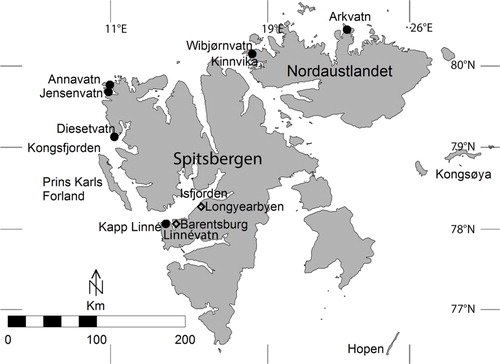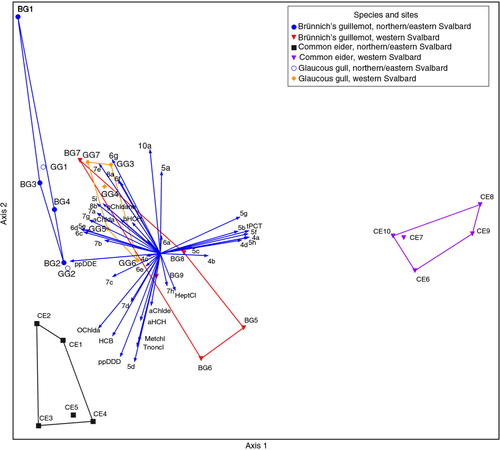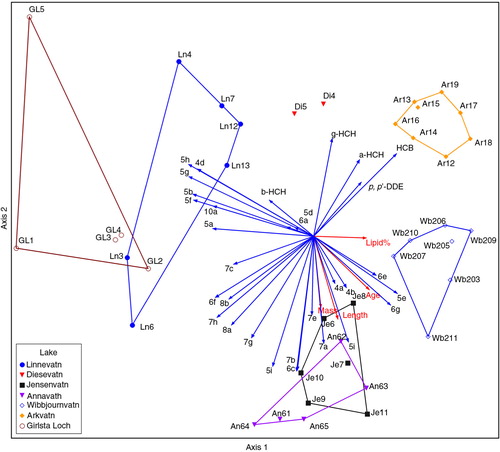Figures & data
Fig. 1 Sampling sites in Svalbard. Arctic char (Salvelinus alpinus) were sampled in the lakes indicated on the map. In western Svalbard, glaucous gull (Larus hyperboreus) and common eider (Somateria mollissima) were sampled in Isfjorden, mainly around Kapp Linné, and Brünnich's guillemot (Uria lomvia) on Prins Karls Forland. In the north and east, eiders were sampled around Kinnvika on Nordaustlandet, gulls at Kinnvika and Kongsøya, and guillemots on Kongsøya and Hopen.

Table 1 Summary of organochlorine concentrations (µg g−1 lipid) in birds and mammals collected during the Ymer-80 expedition in the northern and eastern (N/E) and western (W) parts of Svalbard. Concentrations of individual analytes in individual samples are presented in Supplementary Tables S4a and S4b.
Fig. 2 Principal component analysis of relativized (see the Supplementary file for details) contaminant concentrations in birds. Vector numbers refer to individual polychlorinated biphenyl (PCB) congeners (see Supplementary Table S3). Axis 1 explains 76% and Axis 2 20% of the total variation. Vector numbers refer to individual PCB congeners; the numeral refers to the number of chlorines in the molecule, see Supplementary Table S3b for full explanation. Samples from different locations are presented by convex hulls. There were only two samples of glaucous gull from northern/eastern Svalbard and these are represented by their coordinate points only. Identities of individual samples are given in Supplementary Table S4.

Table 2 Summary of organochlorine concentrations (µg g−1 lipid) in Arctic char collected during the Ymer-80 expedition. Concentrations of individual analytes in individual samples are presented in Supplementary Table S5.
Fig. 3 Principal component analysis of relativized (see Supplementary file for details) contaminant concentrations in Arctic char with respect to lake. Axis 1 explains 50% and Axis 2 explains 22% of the total variation. Vector numbers refer to individual polychlorinated biphenyl (PCB) congeners; the numeral refers to the number of chlorines in the molecule, (see Supplementary Table S3b for full explanation). The samples from different lakes are presented as convex hulls. Lake Diesetvatn, with only two samples, is represented by the sample coordinates only. Identities of individual samples are given in Supplementary Table S5.

